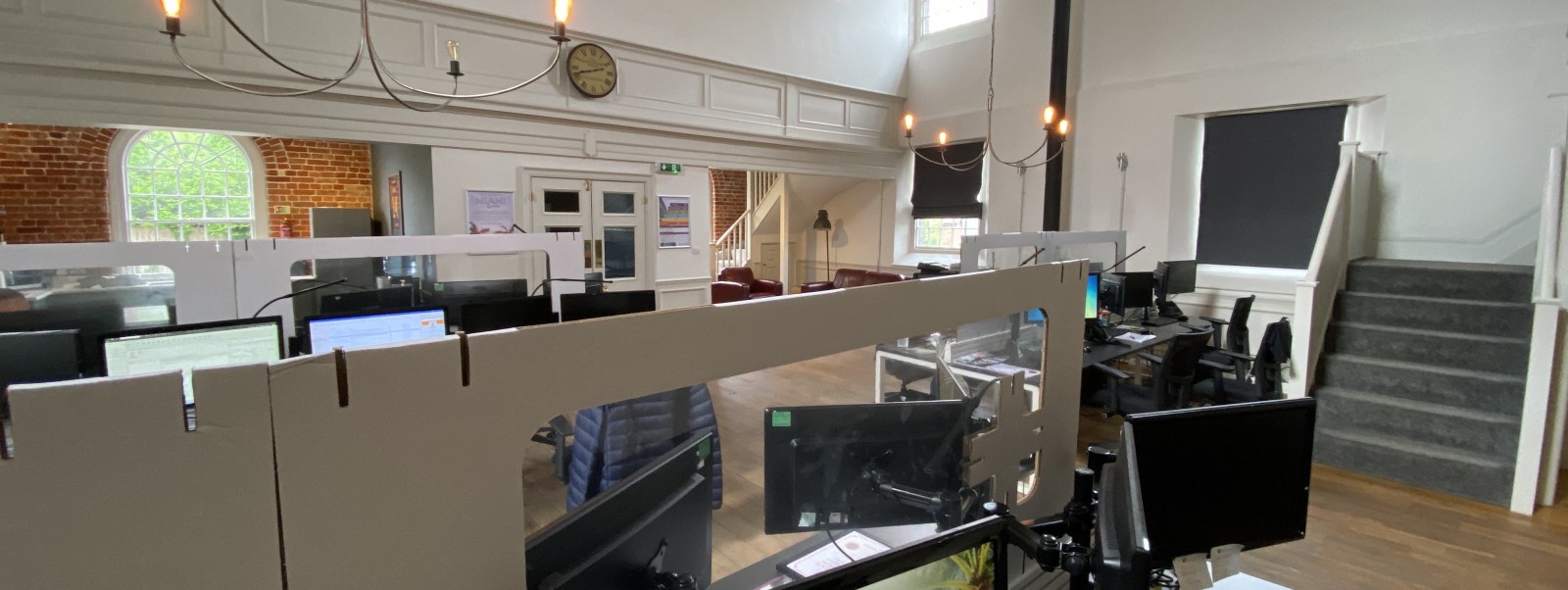Adjusting to the 'New Normal' at work

As people return to offices after months of working from home, being furloughed, or job-seeking in lockdown we can begin to rejoice in reclaiming some level of normality… albeit normality that doesn’t really feel normal at all. Here we acknowledge some key differences from the old normal that are arising from conversations with job seekers and hirers for those yet to return, or those trying to make sense of working under these new conditions.
Changing to office spaces, new ways of working
We expect you’ve seen on LinkedIn already several office preparations to mitigate the risk of spreading the virus with changes such as plastic screens, fewer desks and anti-bacterial stations. All of which can feel clinical and can mess with the office feng shui, not forgetting the obvious alarm bells of fewer desks!
Bear with your employer as they take the first steps to make a safe working environment. Many businesses who have seen success from remote working will now blend their office-time with more working from home. Weather-permitting, offices may also look to develop outside working and meeting spaces to allow for increased distancing.
Video as a more accepted channel of business communication
Video calling is often seen as a technical nightmare and disregarded as an alternative to face-to-face meetings due to perceptions of it being an impersonal and frustrating method of communication for both parties. Since face-to-face meetings couldn’t take place this year, those originally averse to video-calling have been forced to dip their toe and try it out.
Those who have adapted to working remotely have become accustomed to video-meetings and forgiving about slight background noises and technical hitches associated with home-working are breaking down some of the barriers that have previously slowed the diffusion of video as a mainstream business communication method. The cost, time and environmental benefits of eradicating meeting travel justify video calls in place of many face-to-face meetings, even when it is safer to travel and meet face-to-face again.
Of course, video can’t eradicate face-to-face, but it is becoming a noticeably and increasingly normal form of business communication which many returning workers may be yet to adapt to and be open to moving forward.
Productivity, motivation and resilience to adjust
Productivity and motivation levels are huge talking points in the adjustment to working from home discussions. Any disruption to usual workflows are bound to have some impact but even for those who have conquered the art of home working or those who have not worked for months may find their return to work productivity levels take another blow, even if the motivation is high.
Different experiences and approaches to lockdown will mean that you may not be achieved at the same rate you used to or the same rate as your colleagues. It’s key to recognise that each person’s circumstances are unique, try your best, avoid comparison to others and forgive any underperformance as you adjust. Resilience will be the key to finding a good balance in the new working conditions so keep going!
If there is less workload available than you’re used to, that can also be demotivating but positive changes to make which can help you in the future when the workload starts to accelerate such as organising your files and emails into logical systems, or subscribing to some additional online learning. We may not get this time again so find other ways to accomplish small achievements.
Are you discovering any other new changes in the return to work. We would love to hear your experience, challenges and tips for adjusting to the 'new normal'.





